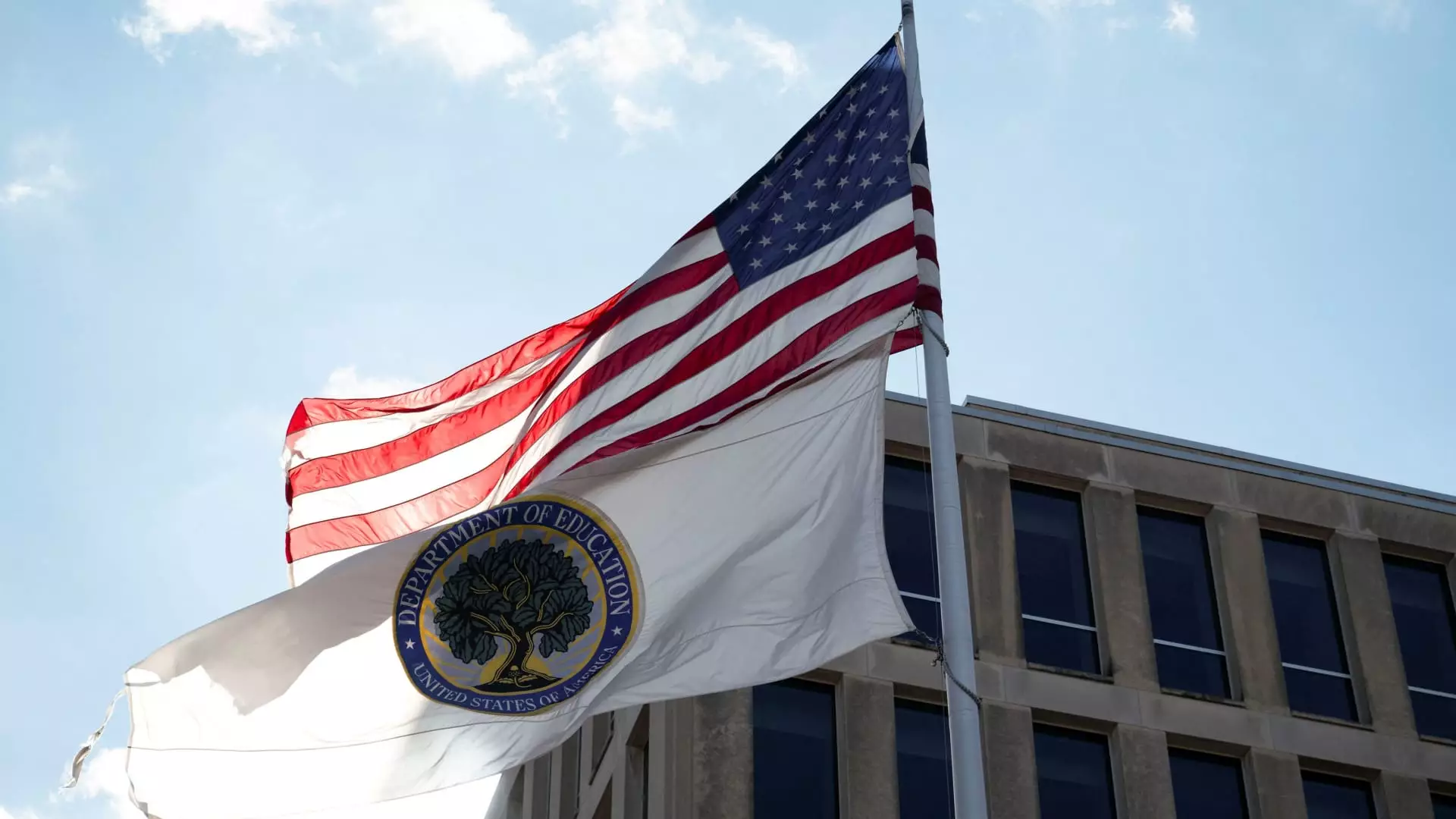As the political climate shifts, federal student loan borrowers in the United States find themselves grappling with uncertainty. With the Trump administration contemplating drastic changes — including the potential downsizing or complete closure of the U.S. Department of Education — the well-being of approximately 42 million borrowers hangs in the balance. This uncertainty breeds anxiety, especially considering the significant role the Department plays in administering a staggering $1.6 trillion in student debt. The implications of such a seismic shift could be devastating for those reliant on federal assistance to pursue their education.
The U.S. Department of Education is not merely a bureaucratic entity; it plays a pivotal role in underwriting loans that facilitate access to higher education. Betsy Mayotte, president of The Institute of Student Loan Advisors, underscores the turmoil borrowers are experiencing. “The anxiety levels are pretty high for borrowers right now,” reflects her sentiment on the alarming possibilities that lie ahead. Politically, the closure of the department would necessitate congressional approval, but the administration could potentially enforce significant changes through executive action.
During his campaign, President Trump earmarked the closure of the Education Department as a key objective. Echoing his intentions, a White House spokesperson remarked on the administration’s focus on reassessing the future of the department. Nonetheless, historical data shows that such attempts to dismantle or merge the department have occurred before. Notably, former President Ronald Reagan identified the agency as a target for elimination, signifying that the struggle for control over educational policy is neither new nor isolated.
Public opinion, however, indicates formidable resistance against the Trump administration’s thrust to abolish the Education Department. A recent poll conducted by Data for Progress reveals that a substantial 61% of likely voters oppose such actions. These figures convey that a significant portion of the electorate perceives the department as an essential component of the educational landscape. Conversely, only 34% expressed approval for the proposed closure, reinforcing a sentiment that favors the stability the department provides.
Despite potential administrative changes, the crux of the issue remains unchanged: student loan obligations would persist regardless of how the administration were to reorganize oversight. As Mayotte articulates, the terms of loans remain intact, even if another agency assumes management. The Treasury Department is cited as a potential successor for administering student debt; however, shifting responsibilities could introduce chaos rather than clarity for millions relying on consistent guidance and support from the Education Department.
The prospect of privatizing the federal student loan system has surfaced among some Republican circles, raising alarms among consumer advocates. Higher education expert Mark Kantrowitz warns that private lenders lack critical protections afforded to borrowers under federal guidelines. The concern is that students navigating complex financial decisions would be left vulnerable without the safeguards that exist within the current federal framework.
The existing federal system is fraught with challenges, as highlighted by Michele Shepard Zampini, senior director of college affordability at The Institute for College Access and Success. The transition of loan accounts for tens of millions of borrowers could exacerbate structural issues and deepen the confusion that students face. “Borrowers need more stability, and this would create chaos,” she comments on the potential fallout.
If the Trump administration proceeds with its intentions to dissolve or suspend the Department of Education, current and prospective students could face profound obstacles in securing the financial aid necessary for their education. Zampini emphasizes the essential role that student loans play in accessing college education for many families. Without this financial support, countless students might find their aspirations stymied.
This impending chaos poses a significant threat to the educational trajectory of countless Americans, as Kantrowitz aptly observes: “Disruption is bad, very bad.”
As developments unfold regarding the U.S. Department of Education, the future of student loan borrowers remains precarious. Whether through executive order or congressional action, the decisions made in the coming months will shape the landscape of educational finance. For the millions who depend on student loans, this creates an atmosphere of uncertainty that could affect their educational pursuits, financial stability, and future opportunities. Ultimately, the fate of the Department and its functions requires careful consideration, emphasizing stability and support for borrowers above all else.

